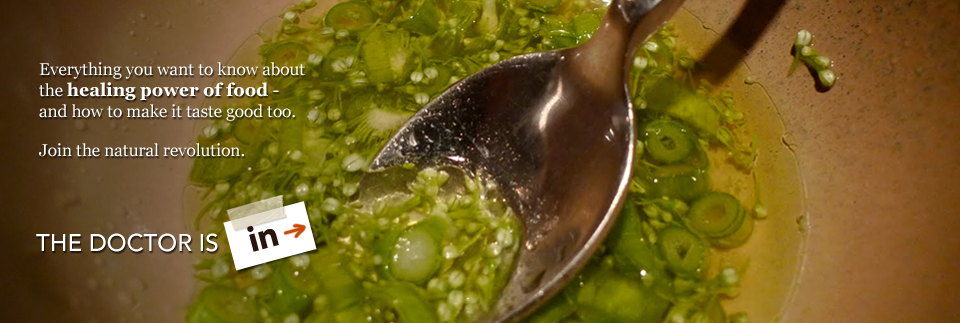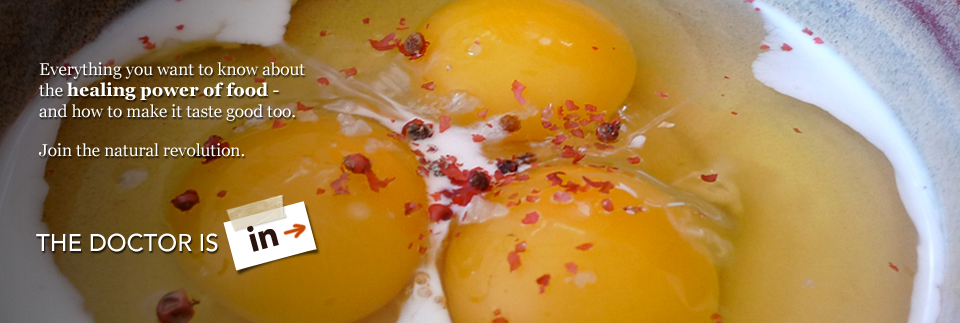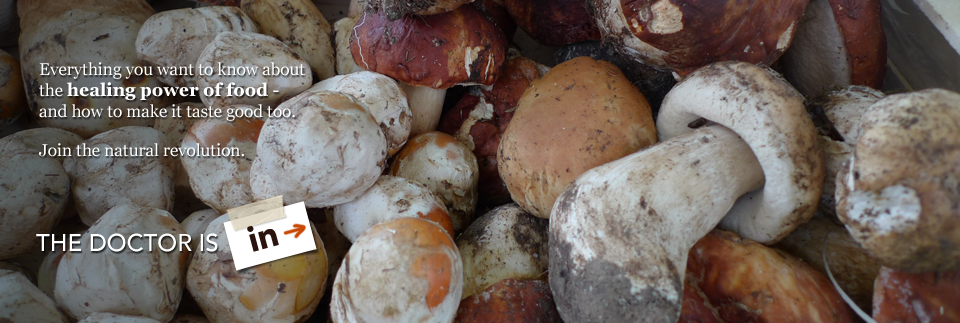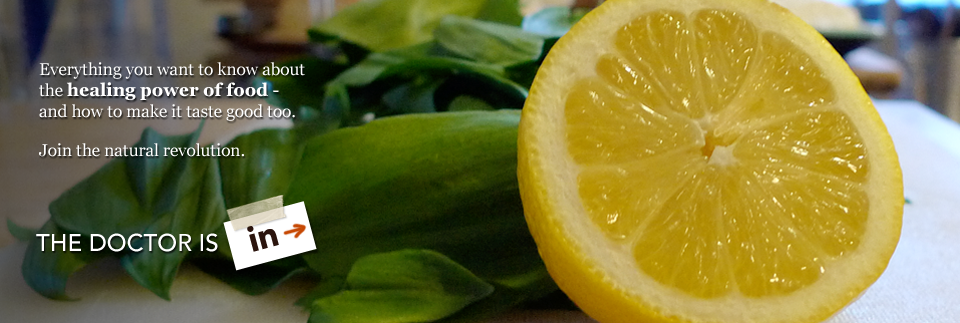The Essence of Salt and Everything Else
We all contain approximately 250 grams of salt in our bodies, which would fill anywhere from 2-4 small containers depending on their size. Just this simple fact should tell you that you/we/all of us, need salt. As a main component of the body's extra-cellular fluids, salt (the sodium portion) transports nutrients into cells. It also helps regulate other body functions, such as blood pressure and fluid volume. The concentration of sodium ions in the blood is directly related to the regulation of safe body-fluid levels. Given the backlash that salt experienced in the last 30 years or so where it was heralded as one of the evil substances (much like carbs the last 5 years), this fact should be a relief and enlightening. The problem isn't that salt is bad for you, but rather the salt they've created for you to eat, washed out, processed, and leached of all the essential minerals and not to mention taste, is not what you should be eating. I rarely will go on about how you shouldn't eat this or that, that's entirely up to you and your habits and where you come from and what works for you, but when it comes to salt - the bleached and bland stuff should be tossed in the trash! Buy good salt, it's the one thing we all use every single day so there is no reason to skimp on it. You should also know that it's not so much that you eat too much salt, but you don't drink enough water to compensate, because the other major substance in your body is water (approximately 70% of it). If you eat a LOT of salt, then drink more water. You sweat, cry, and bleed salt out, amongst other bodily functions so you need to replenish it. Recently, there was a big uproar over a woman who died from drinking water for 2 weeks, she died because she didn't take in any salt! It was that simple, not that salt and water would be enough to live on but without salt your body simply does not work. Taste yourself next time you sweat, you'll see. We are all salty.
Now that I've hopefully illuminated how essential salt is to our physical survival there is much more juiciness to share about it. It was one of the most sought after commodities until the turn of 20th century. Yes, salt which you throw around like it's nothing, was like gold. Not only was it like gold but it had a long history in almost every culture and religion. In fact, such a long history that I found it difficult to condense it here on a blog blurb, but I will share a bit of it and if you want more you should read Mark Kurlansky's Salt, A World History which is a fantastic read. He will take you from pickling foods and curing meats to the importance of salt in wars throughout history.
Salt is used to preserve and we wouldn't have had the opportunity to see mummies in museums if the Egyptians hadn't used salt to mummify. The significance of being a preserving substance has translated into much of salt's esteem in religion as well. Salt was and is a symbol of the eternal nature of God's covenant in Jewish culture and is still used at Shabbat dinners when dipping bread (symbolic of food) into salt (preserving the agreement between God and his people). In Islamic culture salt is considered to seal a bargain also because of it's preserving properties. The Ancient Egyptians, Romans, and Greeks all used salt in sacrifices and offerings. In Christianity salt is symbolic of truth and wisdom as well as longevity and permanence. The holy salt is referred to as Sal Sapientia (the salt of wisdom). The Welsh used to place salt and bread on a coffin and it was said a 'professional sin eater would arrive to eat the salt' - I have no idea if this is still practiced in Wales but it was certainly interesting that a professional sin eater can save you by eating salt off your coffin! Salt was also used much in the way garlic has been with vampires, to protect and ward off evil spirits in Japan, the Caribbean, Africa, and in Europe. In Haiti, spells are said to be broken with salt. There is also the very popular and common even today use of salt in superstition, where if you spill salt you are supposed to throw it over your left shoulder (with your right hand) in order to ward off bad luck. This likely also came from the fact that salt was very expensive back in the day, as I said, it was like gold. You wouldn't spill gold very easily, though I'm not sure you'd throw gold over your left shoulder nowadays if you were to spill it.
People used and use salt for so many purposes that they even created a booklet in 1920 with a list of 101 uses for salt (from the booklet "One Hundred and One Uses for Diamond Crystal Salt" by the Diamond Crystal Salt Company): making ice cream, whipping cream rapidly, getting more heat out of boiled water, removing spots on clothes, making candles dripless, keeping cut flowers fresh, killing poison ivy, treating dyspepsia, sprains, sore throats and earaches, melting ice on roads..etc. The Diamond Crystal Salt company was bought by General Foods in 1929 but still exists today (http://www.diamondcrystalsalt.com/About-Us/About-Us.aspx).
So, when did we begin to use it to eat and not just save our souls and make the world go around? Mark Kurlansky's theory is that when people began to cultivate crops the need for salt became critical as they could not get their salt requirements from vegetables as they had from hunting (meat). Meat has enough salt in essence for you to survive on a meat-laden diet as meat is salty because animals eat salt. Even animals need salt to survive and you can find them at salt licks or a briney springs or whatever other source of salt is out there and available. It was when people moved from hunting to cultivating crops and animals and being more sedentary that salt became essential for survival and this made it one of the first world commodities as well lending it symbolic and spiritual kudos. Ironically, we've moved from hunting (where we didn't need salt as much), to agriculture and the domestication of animals (where we needed it desperately for us and the animals to survive), to a sedentary and mass-production of meat and agriculture lifestyle where we get more than enough cheap salt as it's in everything processed plus the cheap and available meat - another modern riddle where in the process of simplifying we complicated things and here I am trying to tell you to buy grey salt which was considered nasty to the nobles back a few hundred years ago when white salt became the salt de rigueur! We're a funny bunch.
In Chinese Medicine salt is considered cooling, nourishing, and grounding. Cooling means it directs the energy of a person inward which is in fact better for you in the winter as it warms you on the interior, in Ayurvedic medicine they refer to salt as warming for this reason, which gets confusing. Just remember it cools your exterior and it warms your interior. Salt is grounding in that it functions in giving food substance and shape, which is how it brings the flavor out in foods as well. Salt is nourishing in that it stimulates kidney function which then promotes fluid metabolism, creating a moistening effect on the body. Salt also purifies and detoxifies and this may be why it is also used as a preservative as it can help to counteract food poisoning and poor food quality. You can use salt externally when you have a skin eruption. Recently when I had a terrible tooth ache from an inflamed gum I placed coarse sea salt directly on it and within a few hours it had gone down. You should still see a dentist of course, but you can help yourself in the meantime! Gargling with salt and warm water is good for a sore throat. Salt was used on wounds to help heal them faster, and still is - saline solution has salt in it. Salt is alkaline in nature and therefore serves us well as our modern diets (rich in meat, processed foods, overeating, etc) tend to make us acidic. However, processed salt is not considered alkaline.
If you do have high blood pressure, cutting back on salt is a good idea until you have eliminated other toxic foods and have it under control, this does not mean you can't eat salt at all but having a diet laden in salt isn't a good idea if you are still eating a lot of processed foods and meat (both have lots of salt already). This varies from person to person, you need to be aware of how salt affects you - some people can easily swell with even a little bit of salt and some can eat loads of it without any effect. If you eat a lot of salt, drink a lot of water. If you're not exercising or moving much and you're not drinking water, don't eat a lot of salt. It's really all very simple. The real key is to eat good salt as the poor quality refined salt which is 97.5% sodium chloride along with anti-caking chemicals, potassium iodide, and sugar to stabilize the iodine is nothing like sea or rock salt that is rich in an average of 60 trace minerals and just simply tastes much better. It is theorized that poor salt (which is added into everything processed) is over eaten because it does not satisfy and it also is in everything where it shouldn't be. You should be controlling your salt intake by adding it yourself to your taste and constitution and then you will likely never eat too much of it because it is an essential nutrient. Buying "low sodium" salt is perhaps one of the biggest scams out there, much like all these "low carb" products - they'd be better defined as "completely 100% artificial but low everything else"!
You may be wondering about the whole iodized salt phenomenon and where that came from. It used to be that people were at risk for goiter, especially in areas far from the sea since most of the source for iodine is food from the oceans (though it can be found in some soils as well). Without iodine you are at risk of infertility, exhaustion, goiter, mental instability or retardation. The World Health Organization decreed that iodine be added to salt because it is something everyone uses every day and it was an easy way to distribute it. While there are still many areas that are at risk for iodine deficiency, with the globalization of food, the US is unlikely to be one of them. Unprocessed sea salt does have iodine in it, in fact it has more than that, it has magnesium, sulfur, silicon, bromine, phosphorous, in addition to the essential minerals: sodium and chlorine (NaCl = salt). Refined/processed salt leaches out the iodine (and everything else) and then adds iodine back in. I can't knock this process because it's possible it has prevented goiter in many people around the world, but I highly doubt you are at risk if you are eating a well balanced and varied diet with something from the sea at least once a week.
I should add here that there are many countries in the world where they don't eat naked salt as a condiment but rather it is used in the base of other sauces that are the "salt" condiment. For example, and because I happen to use it a lot myself, fish sauce or nam pla is made by using salt in a fermentation process with small fish. Here is an article describing this process:
http://www.thaifoodandtravel.com/features/fishsauce1.html
Soy sauce is also derived from using salt in a fermentation process with soy beans. I could list a million sauces but I won't (for now). The point is that salt is at the base, and part of the reasoning for making these other albeit tasty sauces, is so that it would stretch out the use of salt when it was too expensive to use it frivolously.
Where do you get good salt and what does it look like? All good salt has color, it shouldn't necessarily be white. In fact, if it's white sea salt, it too is likely refined. Salt is generally grey in color (see the picture above) or sometimes black, red, or pink. Usually when it's white it's been washed as the white color of salt was considered prized before, and now with all the processing you want it in it's natural state: generally with color. The color in salt reflects where it came from and is generally a bit of the dirt/earth/minerals from that area, you aren't eating bugs but you are eating a bit of the true "salt of the earth" (though this expression is generally used to mean that a person is solid and good it also reflects salts origins). All salt originates from the sea, even rock salt which is basically where sea beds used to be. Actual sea salt is very similar in it's chemistry to our blood and perhaps another reason why we need it. The theory that we came from the sea may have something to do with the fact that we're basically an ocean on the inside (salt and water). I'll leave it at that for now, as there are many theories on where we came from and this isn't a blog on the origin of our species!
A picture of salt and fresh ground pepper in my spice containers so you can see the contrast in color.
If you really want to eat good salt, there are a few links below where you can order it online. I get my salt from our French family, they send us care packages of yummy coarse sweet salt from Brittany, but I've also purchased pink salt from the Himalayas, and desert salt in Mongolia which is also delicious. I am going to try the red Hawaiian salt soon. Good salt isn't cheap, but it's not really all that expensive either considering how much you use it and how important it is. Below is a list of some of the salt that is available out there:
Black Salt, Kala Namak, Sanchal - Significant for its strong sulfur odor (India) this salt is a pearly pink gray.
Grey salt, Celtic salt, Sel Gris – Harvested from the light film of salt which forms during the evaporation process. The gray or light purple color comes from the clay in the region of France where it is harvested. Collected using traditional Celtic hand methods.
Hawaiian sea salt – Has a distinctive pink hue from the Alaea added to it. The Alaea is volcanic red clay with a high content of iron oxide.
Coarse salt, Gos Sel, Gale Grosso – Is a larger grain salt which resists moisture and is intended to be ground.
Flake salt – Shaped like snowflakes, the brine is made using the sun and wind for evaporation. Then the brine is slowly heated to create the flakes.
Fleur de Sel, Flower of Salt, Flor De Sal – Skimmed from the top of salt ponds early in the process of evaporation. The flavor, like wines, varies depending on the region it is harvested from. Typically it is from France though some is produced in Portugal.
Grinder salt – Large dry salt crystal which can easily be put through a grinder. With a salt grinder you want to avoid metal as the salt will corrode the grinding mechanism.
Italian Sea Salt, Sicilian Sea Salt, Sale Marino – Harvested from the lower Mediterranean sea by hand using traditional methods of natural evaporation, this salt is high in iodine, fluorine, magnesium and potassium.
Smoked Sea Salt - One other derivative of sea salt is a smoked sea salt. The salt is smoked over real wood fires to add the flavor to the crystals.
In my kitchen : a Himalayan pink salt slab, pictured below, which you can use for cooking eggs, thin sliced meats, and fish as well as for serving cheese or crudites, while imparting a delicate mineral flavor to all of it.

Here is the salt from Brittany I have in my cupboard at the moment along with some Mongolian salt (not pictured) and some large pink rock salt with a grater (also not pictured).
If you want to buy a salt slab or salt products here are a few places you can do so:
http://www.saltworks.us/
http://www.surlatable.com/









Post new comment